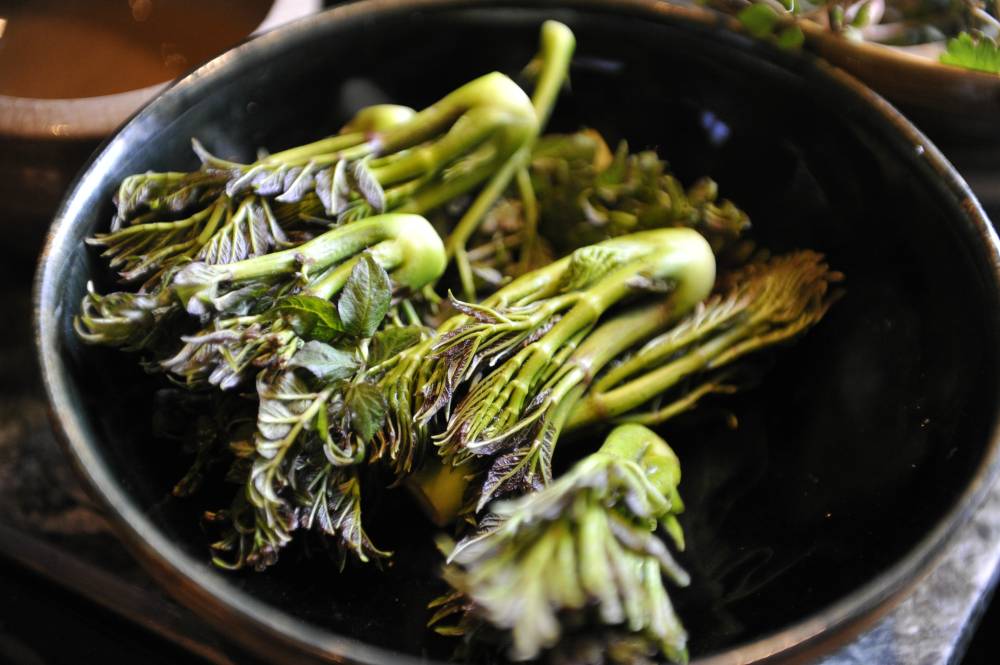As the snow melts and spring approaches, sansai (mountain vegetables) start to flourish. These greens are the true harbingers of Japanese spring, offering a refreshingly bitter counterpart to the typically mild vegetality of other spring vegetables such as peas and asparagus. Without exception, when you ask when the best time is to come and enjoy any given area’s cuisine, the proliferation of mountain vegetables across the country guarantees the answer is spring.
Except for zenmai (fiddlehead ferns), fuki (giant butterbur), udo (herbal aralia) and mitsuba (Japanese parsley), most mountain vegetables endemic to Japan are foraged exclusively in the wild. As such, they’re only available in stores and on menus around this time, though these seasonal lines are beginning to blur. Don’t go out foraging as a novice on your own: It’s best to buy mountain vegetables harvested by knowledgeable foragers, since there are many similar-looking toxic plants.
While many of these myriad sprouts, including buds and alliums, can be found in forests and fields all over Japan, others are only available regionally. The following are but a few of what you might encounter in your travels across Japan, along with some ideas on how to use them.

















With your current subscription plan you can comment on stories. However, before writing your first comment, please create a display name in the Profile section of your subscriber account page.